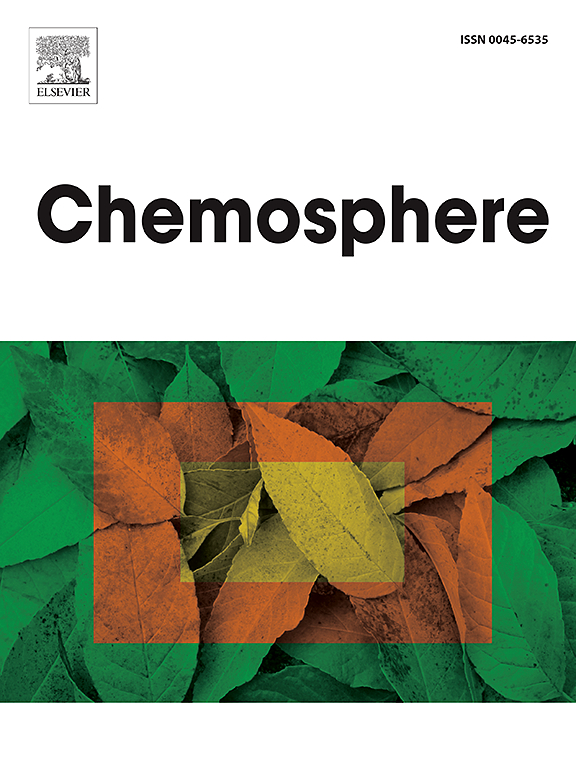Effect of intermittent water flow on biodegradation of organic micropollutants in the hyporheic zone
IF 8.1
2区 环境科学与生态学
Q1 ENVIRONMENTAL SCIENCES
引用次数: 0
Abstract
Water scarcity in the Mediterranean area has increased the number of intermittent rivers. Recently, hyporheic zones (HZ) of intermittent rivers have gained attention since a substantial part of the stream's natural purification capacity is located within these zones. Thus, understanding the flow dynamics in HZs is crucial for gaining insights into the degradation of organic micropollutants. A lab-scale study using column experiments was conducted in an attempt to elucidate the environmental processes accounting for the biodegradation capacity of the HZ under flow intermittency. A mixture of six compounds including pesticides (chloranthraniliprole, fluopyram and trifloxystrobin) and pharmaceuticals (venlafaxine, amisulpride and paroxetine) spiked at 1 μg/L level was used for degradation kinetic studies and at 1 mg/L for transformation products identification using suspect/non-target liquid chromatography high-resolution mass spectrometry approaches. The experiments lasted 60 days, divided into two 14-day phases: one before and one after a 5-week desiccation period. Bacterial community was charaterized by high-throughput DNA sequencing. The results suggested that intermittent flows stimulated the biodegradation of three compounds namely fluopyram, trifloxystrobin and venlafaxine, showing a large range of biodegradation profiles in batch water/sediment testing system according to OECD 308 tests. Biodegradation rate enhancement was ascribed to the occurrence of additional transformation routes after the desiccation period of river sediment, with the formation of new transformation products reported for the first time in the present work. 16S rDNA sequencing revealed that the desiccation period favored the growth of nitrifying and denitrifying bacteria which could partially explain the emergence of the new transformation pathways and most specifically those leading to N-oxide derivatives. Identification of transformation products also revealed that reductive transformation routes were relevant for this study, being dehydrogenation, dehalogenation, ether bond cleavage and sulfone reduction into sulphide important reactions. These results suggest that the intermittent flow conditions can influence the HZ biodegradation capacity.

间歇水流对低渗带有机微污染物生物降解的影响。
地中海地区的缺水增加了间歇性河流的数量。近年来,间歇性河流的隐隐带(HZ)引起了人们的关注,因为河流的大部分自然净化能力都位于这些区域内。因此,了解高污染区域内的流动动力学对于深入了解有机微污染物的降解至关重要。利用柱实验进行了一项实验室规模的研究,试图阐明在水流间歇下HZ生物降解能力的环境过程。采用6种化合物的混合物,包括农药(氯虫腈、氟吡喃和三氯虫酯)和药物(文拉法辛、氨硫pride和帕罗西汀),加标浓度为1 μg/L,用于降解动力学研究,加标浓度为1 mg/L,用于转化产物鉴定,采用怀疑/非目标液相色谱高分辨率质谱法。试验期60 d,分为干燥前和干燥后两个阶段,各为期14 d。通过高通量DNA测序对细菌群落进行了表征。结果表明,间歇流动刺激了氟吡喃、三氯虫胺和文拉法辛三种化合物的生物降解,根据OECD 308测试,在间歇水/沉积物测试系统中显示出大范围的生物降解特征。生物降解速率的提高归因于河流沉积物在干旱期后出现了额外的转化途径,并首次报道了新的转化产物的形成。16S rDNA测序显示,干燥期有利于硝化和反硝化细菌的生长,这可以部分解释新的转化途径的出现,特别是导致n -氧化物衍生物的途径。转化产物的鉴定也揭示了与本研究相关的还原转化途径,脱氢、脱卤、醚键裂解和砜还原为硫化物的重要反应。这些结果表明,间歇流动条件会影响HZ的生物降解能力。
本文章由计算机程序翻译,如有差异,请以英文原文为准。
求助全文
约1分钟内获得全文
求助全文
来源期刊

Chemosphere
环境科学-环境科学
CiteScore
15.80
自引率
8.00%
发文量
4975
审稿时长
3.4 months
期刊介绍:
Chemosphere, being an international multidisciplinary journal, is dedicated to publishing original communications and review articles on chemicals in the environment. The scope covers a wide range of topics, including the identification, quantification, behavior, fate, toxicology, treatment, and remediation of chemicals in the bio-, hydro-, litho-, and atmosphere, ensuring the broad dissemination of research in this field.
 求助内容:
求助内容: 应助结果提醒方式:
应助结果提醒方式:


